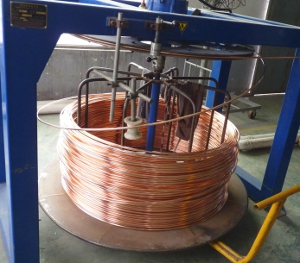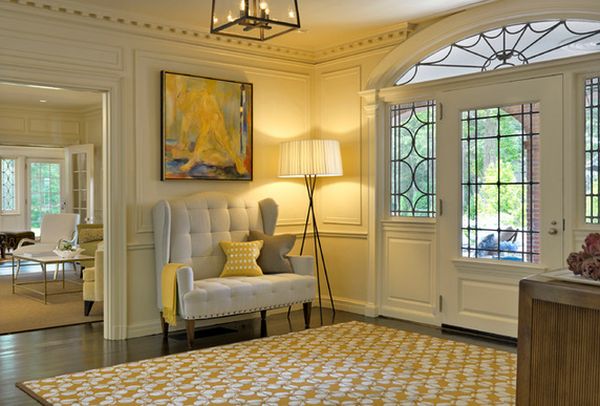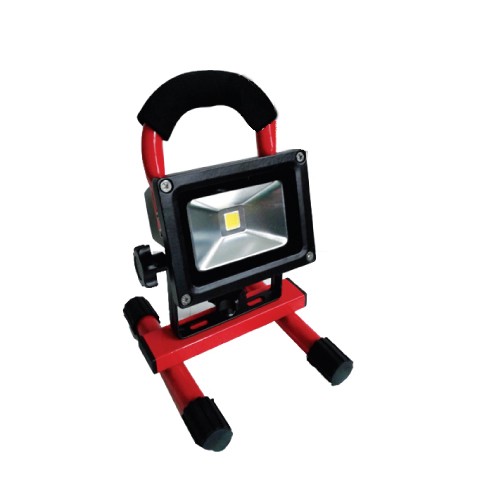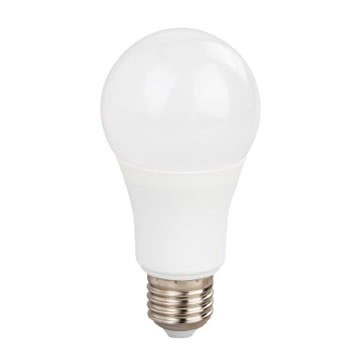What is the difference between CCA, CCS, CCC and Pure Copper?
What is the difference between CCA, CCS, CCC and Pure Copper?
Copper can account for up to 80% of the cost of a cable, so it's no surprise that alternatives to copper are constantly being sought. The practice of replacing solid copper with copper aluminum (CCA) or copper clad steel (CCS) to save money is still common, so do you know what the differences are for you?
What is CCA?
The most common alternative to copper used in the electrical industry is aluminum. Widely used in power distribution, many aluminum cables buried under the road as power cables. CCA is an aluminum conductor with a thin copper coating. It is made by enclosing an aluminum rod in a layer of copper tape that is welded along the seam to completely enclose the aluminum. The entire rod is drawn through a series of rollers to reduce the diameter to just 0.1 mm, just over the thickness of a human hair. The main disadvantages are lack of flexibility, higher resistance and lower conductivity compared to copper. This means you have to use more of them to carry the same current or amps. On a power cord, this is usually not a problem as you only need to go up a size or two. It results in a larger overall cable using more insulation, shielding, but the savings made over an equivalent copper cable are significant. Aluminum is also used in some high frequency coaxial cables where aluminum can perform better than copper at very high frequencies (GHz). In both of these cases the aluminum is bare (silver in color) and easy to spot. It is not disguised to look like copper.
CCA has some advantages over solid copper, mainly around weight and cost. CCA is significantly lighter than copper and in some applications can offer advantages in cable containment and handling. Aluminum is about one-third the price of copper and therefore provides cost savings over solid copper conductors. Theft is also less likely with deeply discounted prices. It also has better corrosion resistance than plain aluminum
What is CCS?
CCS (copper clad steel) is similar to CCA in that a steel conductor is coated with a thin layer of copper. Steel gives greater mechanical strength than aluminum, but is heavier and less flexible. Of course it is also less conductive than copper. It is manufactured in the same way as CCA, where the applied copper is drawn to smaller diameters by means of rollers.

Higher mechanical strength creates a strong alternative to copper that minimizes physical damage during installation compared to aluminum. Problems arise when both CCA and CCS are referred to as pure copper cables. Nor are they suitable for applications where pure copper is specified and can cause long-term problems that can be expensive to correct once the cable is installed.
What is CCC?

Another major problem is the use of recycled copper as conductor material. Known as CCC (Copper Clad Copper), these conductors use low grade copper alloys made by mixing recycled copper with impurities such as brass, tin and other contaminants and forming it into 8mm bar. This is then coated on copper foil and reduced using the same process as CCA resulting in an impurity-filled conductor with a very high oxygen content and resistance that can be even higher than aluminum. This can be very difficult to detect as the conductor appears "yellow" (like copper when cut). The best way to check is to measure the resistance of the conductor if you have the proper equipment.
Which cables are affected?
The cables mainly affected are telephone cables - style CW1308, alarm cables and coaxial cables. Some manufacturers also offer Cat 5 and other data cables as CCA.
What risks are associated with CCA and CCS?
The main problems are that aluminum and steel have much higher resistance than copper. This leads to a reduction in current capacity resulting in overheating of the cable and possibly leading to a fire. Aluminum is also much more brittle than copper and this can lead to breakage during installation.
These cables are also prone to fatigue at the termination point which can cause random errors. This is especially true for insulation displacement connectors (ICDs). Alarm systems using CCA could lead to false readings and false alarms, while coaxial leads to degraded image quality, particularly at long distances.
Why is this a problem?
One of the difficulties is that even on close inspection it can be very difficult to detect CCA. As the wire is cut, there is a tendency for the copper to strike over the aluminum end, making it look like solid copper. Sometimes it is possible to tell with a magnifying glass or a simple burn test using a lighter. Aluminum has a higher melting point than copper, for example.
However, CCA should not simply be dismissed. Some applications, for short runs, for example, CCA could work to an acceptable standard. In this case make sure you know what you are buying and get significant cost savings. In some applications, the savings can be significant, while in others, the visits and customer dissatisfaction will be too great.
Conclusion
Talk to your supplier and make sure you know what is provided. Drag may not be a problem on short runs. In some cases the cost savings may be attractive, but make sure you consider the application and what the installation intends to achieve. If, like most users, you just want to 'set and forget', you might be better off sticking with pure copper conductors and taking advantage of their proper performance characteristics. Check the standard the cable must meet, if pure copper has been specified it has been for some reason, then you need to ask yourself if replacing CCA or CCS is a good idea.
Some suppliers clearly state CCA or CCS in their description, but if in doubt ask for a technical data sheet. If you are offered cheap cable you should be very careful if the description or spec sheet says CCA, CCS or Copper Alloy. Whichever you choose, make sure you know what you're buying - copper, aluminum copper or copper-clad steel. There is a big difference.
Led Floodlights – Important Information
The rapidly developing LED technology is now an important part of our lives as we can observe its applications on a daily basis. The wide range of LED lamps is characterized by an interesting variety of sizes. From small spotlights, table lamps and projectors, LED technology is constantly gaining ground due to the multitude of advantages it presents over traditional forms of lighting.
Led Flood lights
While a number of LED lighting options are already available in the market for interior decoration, in recent years the use of LED floodlights for outdoor lighting has become a common choice. In fact, LED floodlights find applications mainly in stadiums and other outdoor areas where both narrow and wide beam angle lighting is required. In this way the LED projectors are able to provide an even illumination that is not blinding.
Advantages
The ever-increasing frequency of use of LED projectors is an important indicator of the success of LED technology. This success is mainly based on a large number of advantages presented by this technology. Some of these advantages are:
- LED floodlights are impressively energy efficient compared to other lighting methods, including fluorescent lighting. If we compare a halogen projector with an LED projector, we will notice a surprising reduction in energy consumption. By applying LED floodlights in an outdoor space, the consumer can benefit financially from reducing the electricity bill. Such floodlights can be used in professional outdoor areas, in stadiums or in your home garden.
- LED floodlights can be characterized as environmentally friendly products. As mentioned above, LED headlights have a reduced energy consumption, which automatically reduces the amount of fossil fuels. In this way, LED headlights reduce the carbon levels that end up in the environment. We should also mention that LED headlights do not heat up as is the case with other lighting sources. In addition, they do not produce UV or infrared radiation. Finally, LED projectors do not contain mercury which is classified as a dangerous neurotoxin.
- LED floodlights are designed to provide a certain angle of light beam which is directed specifically to the area where we need it. In this way, we could claim that they reduce or eliminate light pollution, a phenomenon that you consider a major environmental and ecological problem.
- LED floodlights are characterized as particularly durable products due to their design, which allows them to operate continuously without maintenance. In particular, their design allows for a lifespan estimated at 50,000 hours, so frequent replacement of the lamp is not required.
- LED headlights have the ability to produce a pleasant quality of light. In addition, they provide the option of choosing a color temperature according to your personal taste and needs. For example, Cool White LED floodlights are chosen for lighting workplaces or sports activities. By the same logic, the choice of a warm white lighting color is usually chosen in areas that require a softer atmosphere such as in recreation and relaxation areas.
What to watch out for
Despite their frequent use and the great advantages that LED projectors present, consumers should pay attention to certain things when choosing and purchasing projectors. When making your choice, it is quite important to ensure that the particular product you choose has the current LED technology which is manufactured by a recognized manufacturer. Additionally, it is important to consider the quality and features of an LED projector such as brush design, performance and power cord. Finally, it is worth noting that you should not choose LED headlights if there is any doubt that the product is not designed and manufactured according to the standards that have been set.
Led Bulbs – Useful Information
LED technology has begun to gain a lot of ground in recent years and is part of our everyday life since we meet it quite often and in various forms in the objects that surround us such as lamps, illuminated signs, lighters, flashlights and many others. But what is it that makes LED technology develop at such a fast pace and what are the advantages it presents? Below we'll break down everything you want to know about LED bulbs as well as the ways you can improve your everyday life.
LED technology
This particular technology uses LED photodiodes (LED - Light Emmiting Diode) through a fairly simple idea. In essence it is a contact of negative and positive charges. This contact could be imagined as a magnet through which the current manages to pass through one end but stops at the other. As for lamps, LEDs are engineered to reproduce a specific color, at a specific wavelength, when current flows through them.
Types of LED bulbs
Due to their rapid growth, consumers can choose between different types and sizes when it comes to LED bulbs. For example, there are LED lamps that have a fairly large brush and are used in heavy industry products. In addition, the snow-cone type has a brush that occupies the bottom half of the bulb. This type has the ability to emit directional light and is often used in multi-lights. Another type of LED lamp is the one that produces unidirectional light and is often used in table lamps. More generally, there is a wide range of types that have applications in flat panels, in projectors or for hidden lighting needs.
Advantages
The rapid pace of development of LED technology in the field of general lighting should not surprise anyone, as its great success is based on a long list of advantages. In fact LED lamps present a striking advantage over more traditional lighting methods. Some of them are:
- LED lamps have a large performance base while exhibiting a low power consumption. In this way consumers have a significant financial benefit.
- LED types of lamps in most cases do not emit UV or infrared radiation and do not contain mercury. Thus, we could claim that they are environmentally reliable and child-friendly.
- In addition to the economic benefits, the fact that LED lamps have a long life span and longer maintenance intervals should be added.
- In addition, they are available in a wide range of sizes and colors while providing direct light during operation.
What to watch out for
When buying Led lamps you should be careful when reading the lighting component label. In each lamp package, you will find a table that provides information about its efficiency, watts, life, color and temperature, and more. When buying an LED lamp you should know that its brightness is not calculated based on the Watt value. In fact, this is indicated by the lumen value. In order to be able to better calculate the brightness of the lamp, you should know that 60 Watt gives a brightness of approximately 800 lumens.
LED lights and Wi-Fi
LED bulb technology is developing at an incredibly fast pace and manufacturing companies are constantly trying to adapt new features. These new features are intended to make LED lamps even more attractive. For example, there are LED lamps on the market that are capable of connecting to Wi-Fi, providing the ability to manage them through a mobile phone. By using technologically specialized platforms, different colors of LED lamps can be combined resulting in the production of millions of colors and shades. This technology does not need a large investment and installation of interconnected systems.
Home Lighting - Some Usedful things we must Know
Home lighting fixtures have a very decisive role in our daily lives as they are able to create an atmosphere and a different look depending on their style, color and design. Lighting fixtures can affect the size of a space, the color of objects and our mood depending on the space in which we enter. A wrong choice of luminaire can affect the aesthetics that our home exudes and suppress the strong points of our interior decoration.
Types of lighting
The power of the lighting can highlight everything you want, provided it is used properly. For this reason, it should be noted that there are 3 types of lighting. The first type is direct lighting and concerns lighting fixtures that direct the light beam at specific points. For example, desk lights, headlights and spotlights produce direct lighting. The second type is indirect lighting which is applied to surfaces and illuminates the space such as floor lamps, hat lamps and hidden lighting. The last category is diffused lighting with a typical example of hanging lamps.
In order to be able to characterize a space as properly lit, there must be a combination of these 3 types of lighting. In this way we will achieve a harmonious and balanced result. In this process we must take into account that each space of our house has different needs and emits a different atmosphere. So, the luminaires we choose should be different depending on the space and its aesthetics.
Living room
To choose the right luminaire and the type of lighting that your living room needs, you need to consider a large number of factors. For example, the color of the living room is something that will significantly affect the choice of your lighting fixtures. Cool colors on the walls require a kind of cold lighting and vice versa. In addition, you need to consider both the position and the amount of natural light entering your living room.
As one of the main rooms of a house, the living room should be well lit as we spend a significant part of our lives there. A very popular option for the living room are hanging chandeliers that allow diffused lighting. For a better result, you should combine your main luminaire with indirect and direct lighting options. For example, you can use hidden lighting for moments of relaxation or small spots if you want to emphasize objects such as paintings and photographs.
Kitchen
Choosing home lighting is not an easy task. Each space should have its own unique lighting that serves the needs but also satisfies the personal tastes of the people who are there. For the kitchen, you should choose lighting fixtures that are capable of producing diffused lighting. In addition, you can combine lighting fixtures that will provide adequate lighting to your counters and cabinets. You can achieve this with spots or LED strips.
Bedrooms
Lighting fixtures that frame the bedrooms of a home should be able to provide a sense of relaxation. Based on this logic, the most common choice is a pendant lamp in warm shades or a floor lamp. In addition, a common practice is to choose a table lamp that is placed on the nightstand. In general, in order to be able to achieve the feeling of relaxation in your bedrooms, you should choose indirect lighting fixtures. In the children's rooms where there is an office, you should also include a direct lighting fixture that will provide the required light and will facilitate reading.
bathroom
Bathroom fixtures should be chosen based on your daily needs. For example, women for everyday makeup need a cool mirror in the mirror. However, this can significantly affect your relaxation moments in the bathroom. So, when choosing bathroom fixtures you should take into account various factors such as the type of lamp, the color temperature and the location of the luminaire. In general, installing a dimmer can help a lot as you will be able to increase or decrease the intensity according to your needs.
Osram OS introduces constant temperature Oslon LED SSL with stable performance
Oslon SSL-LEDs from OSRAM Opto Semiconductors represent high lighting efficiency. The new generation of high-power LEDs will be appreciated by users for its improved efficiency, with an increase in efficiency of about 25%.
In addition, the luminous flux of the LED at elevated temperatures is now stabilized. In this way, it is possible to maintain an almost constant luminous efficiency, despite high application temperatures. Thanks to this optimization, the design of the luminaire is significantly simplified.
With the new Oslon SSL LED generation, OSRAM Opto Semiconductors presents a stable high-temperature light source. The LED provides a luminous flux of typically 98 lm in warm white (3,000 K), with an operating current of 350 mA at an on-chip application temperature of 85 °C. With its characteristic luminous efficiency of 96 lm / W, referring to the ratio of luminous flux and electrical output consumed, it is among the most efficient 1 mm²-Chip LEDs currently on the market. The combination of higher luminous flux and reduced forward voltage of 3.1V equates to an increase in efficiency of approximately 25%, compared to the previous generation. For manufacturers of lighting solutions, this makes the development of luminaires much easier: a smaller number of LEDs reaches the same luminous flux as well as the same performance as before.
State-of-the-art ladder used
The latest developments in chip technology, converters and package are the secret to optimizing the performance of Oslon SSL. The higher temperature stability of its luminous flux, even when operating under "hot" application conditions, greatly simplifies thermal management. "This efficiency improvement not only means a reduction in the initial costs borne by our customers, but also makes it easier to develop lighting solutions," says Martin Wittmann, marketing manager at OSRAM Opto Semiconductors.
Very small and bright
The new OSRAM Oslon SSL LEDs are available in the bright color "warm white" (3000 K), suitable for indoor lighting (type EC), for example in luminaires, as well as in "cold white" (5000 K), for use in outdoor lighting (PC type). As with previous products in the OSRAM Oslon SSL series, the new arrivals are available in the small 3mm x 3mm component size and offer two different lenses. Thanks to the reflectivity of the packaging, the light irradiated on the side or back is reflected and can be reused. "Thus, this LED generation, which combines the converter and the reflective package, ensures the best possible color homogeneity of light color at an angle," adds Martin Wittmann.
Technical Data (at 350 mA operating current):
Dimensions - component size 3 mm x 3 mm
Radiation characteristic - 80° / 150°
Lifetime > 50,000 hours (L70/B50 at Tj=125°C)
Light colors and CRI - 3,000 K: CRI 80 min.
- 5,000 K: CRI 70 typ.
Luminous efficacy - 3,000 K: typ. 96 lm/W (Tj = 85°C)
- 5,000 K: typ. 111 lm/W (Tj = 85°C)
Luminous flux - 3,000 K: typ. 98 lm
- 000 K: typ. 113 lm
Forward voltage typ. 2.9 V
What is Tempered Glass and what are its benefits?
What is Tempered Glass and what are its benefits?

You may have heard something about Tempered Glass, thought of it as a gadget promotion or as a simple form of screen protectors for mobile phones. But what exactly is Tempered Glass? What makes it so different from ordinary screen protectors? More importantly, what will give you maximum security for your device and be sure it's worth the money?
The main difference between plain glass and tempered glass - is the way they are made. The tempered glass is specially manufactured and baked in ovens under high temperatures.
What does this mean for you, the consumer?
One of the main characteristics of tempered glass is its different breaking behavior than ordinary glass. While normally, glass would break into many uneven pieces, tempered glass does not behave the same way. This eliminates the risk of sharp edges and makes it a much safer option should something happen - for this reason, tempered glass is often referred to as "safety glass".
Where is tempered glass commonly used?
Due to its safety benefits and temperature resistance (resulting from the manufacturing process), tempered glass is used in ovens, coffee makers, computer monitors, windows, showers and more. However, in recent years the greatest interest is mainly in its application in screen protectors for mobile phones and other devices.
What exactly is Tempered Glass for your phone?
Tempered Glass protectors are common accessories for mobile devices and look quite similar to plastic screen covers. However, there are several essential differences:
- Thanks to the aforementioned heat resistance, the hardened and tempered glass will reduce the chances of damaging your phone.
- Tempered glass is not easily scratched or damaged, compared to common protectors on the market.
- Tempered glass is five times thicker than plastic screen protectors and thus offers better impact protection.
- Tempered glass is sleeker and smoother in texture, so it's closer to the look and feel of your original phone's screen.
- Due to the above advantages, tempered glass is more expensive in price.
Do you still think it's worth it?
Thanks to heat, shock and scratch resistance, a Tempered Glass is a reliable way to keep your phone screen safe. If you've lost your phone before and damaged your screen, you may remember the unpleasant price of getting it repaired. If you're a fan of bigger screen devices, you might want to consider investing a few extra bucks in some extra protection.
How to Choose the Home Lighting
Choosing home lighting fixtures is one of the details you need to design when decorating a new space. But the decision is not easy, not even with a simple change or renovation. But you have to be organized and take things one by one, per room.
Entrance

A floor lamp in a corner can give you the extra lighting and aesthetics that this space needs.
10W Portable Rechargeable LED Flood Light: Best Outdoor Emergency Light For You

Do you need a outdoor emergency light? Do you want to find the best one for practical use? If yes, here is a suggestion for you, that is 10W portable rechargeable LED flood light, which is said to be the best flood light for outdoor emergency lighting. And now, let’ s see more details about this flood light in the following together.
High Quality E27 10W Warm LED Bulb: Perfect For Family Use

E27 10W warm LED bulb is a high quality LED bulb, which has been popularly welcomed by many families all around the world. It is said that this bulb is perfect and ideal for family use. If you are curious about this bulb and desiring to see whether it is good for family use or not, you can read the following for more details.
Why Choosing Outdoor Solar Powered LED Wall Light For Garden

The theme today is for the external solar powered LED light, which is the perfect and ideal light for the garden. Many people have already adopted it for lighting in the garden. It is said that this wall light is chosen for the garden due to its easy installation, excellent lighting performance and practical operation, which will be described in detail below.
Wall Lights can also be wall mounted, as well as all wall fittings and accessories, which give you the flexibility to place in your garden. This light is easy to install without the need for cables or maintenance, offering great comfort.
